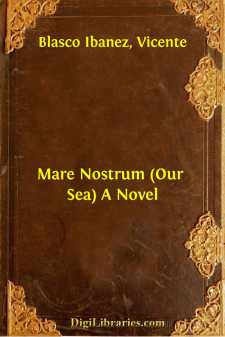Categories
- Antiques & Collectibles 13
- Architecture 36
- Art 48
- Bibles 22
- Biography & Autobiography 813
- Body, Mind & Spirit 142
- Business & Economics 28
- Children's Books 14
- Children's Fiction 11
- Computers 4
- Cooking 94
- Crafts & Hobbies 4
- Drama 346
- Education 46
- Family & Relationships 57
- Fiction 11828
- Games 19
- Gardening 17
- Health & Fitness 34
- History 1377
- House & Home 1
- Humor 147
- Juvenile Fiction 1873
- Juvenile Nonfiction 202
- Language Arts & Disciplines 88
- Law 16
- Literary Collections 686
- Literary Criticism 179
- Mathematics 13
- Medical 41
- Music 40
- Nature 179
- Non-Classifiable 1768
- Performing Arts 7
- Periodicals 1453
- Philosophy 64
- Photography 2
- Poetry 896
- Political Science 203
- Psychology 42
- Reference 154
- Religion 513
- Science 126
- Self-Help 84
- Social Science 81
- Sports & Recreation 34
- Study Aids 3
- Technology & Engineering 59
- Transportation 23
- Travel 463
- True Crime 29
Sonnica
Description:
Excerpt
CHAPTER I
AT APHRODITE'S TEMPLE.
When the ship of Polyanthus, the Saguntine pilot, arrived off the port of his native land, the mariners and fishermen, their vision sharpened by ever watching the distant horizon, had already recognized his saffron-dyed sail and the image of Victory, which, with extended wings, and holding a crown in her right hand, stretched along the prow until it dipped its feet in the waves.
"It is Polyanthus' ship! It is the Victoriata returning from Gades and New Carthage!"
To obtain a better view they rushed out upon the stone breakwater surrounding the three basins of the port of Saguntum, which were connected with the sea by a long canal.
The low marshy land, overgrown with reeds and tangled aquatic plants, extended as far as the Gulf of Sucro, which bounded the horizon by its curving blue belt, and over which the fishermen's smacks skimmed like dragon flies. The trireme slowly advanced. The colored sail fluttered in the breeze without filling, but the triple banks of oars, with rhythmic movement along its flanks caused the vessel to spring over the white foam lashing the entrance of the canal.
Night was falling. On the hill near the port the temple of Venus Aphrodite reflected from the polished surface of its pediment the fire of the setting sun. A golden atmosphere wrapped the columns and the blue marble walls, as if the father of day, before sinking to rest, were greeting the goddess of the waters with a kiss of light. The chain of dark mountains, covered with pines and shrubbery, swung around the sea in a gigantic semicircle, embracing the fertile valley in which lay the Saguntine gardens, the white villas, the rustic towers and the hamlets rising among the clustering green trees of the fields. At the other extreme of this mountain barrier, dimmed by the distance and the haze of the landscape, could be seen the city, the ancient Zacynthus, with its dwellings compressed within walls and citadels upon the fold of the hill. Far above was the Acropolis, with cyclopean ramparts above which rose the high-roofed temples and public buildings.
The port was enlivened by the stir of labor. Two ships from Massilia were loading with wine in the big basin. One from Liburnia was taking on a cargo consisting of Saguntine pottery and dried figs, to be sold in Rome, while a galley from Carthage contained in its hold great bars of silver brought from the mines of Celtiberia. Other ships, with sails furled and their banks of oars fallen against their sides, swung at anchor near the wharf, like great sleeping birds gently nodding their prows with figureheads of crocodiles or of horses, used by the navy of Alexandria, or displaying on the stern a hideous red dwarf resembling that which decorated the vessel of the Phœnician Cadmus in his astounding voyages over many seas.
The slaves bending under the weight of amphoræ and silver ingots, wearing no other clothing than a loin-cloth and a white hood, their fretted and sweating bodies bare, passed like an endless rosary along the boards leading from the mole to the ships, as they carried the merchandise from where it lay piled on the wharf into the concave holds of the vessels.
In the centre of the great middle basin rose a tower guarding the entrance to the port; a solid structure with its stone foundations laid in the deepest water. Moored to the rings which adorned its walls lay a ship of war, a Liburnian galley, high of stern, the prow a sheep's head, the great square sail furled, an armored fore-castle near the mast, and on the gunwales, forming a double row, the shields of the classiarii, soldiers destined for marine combats. It was a Roman vessel which at daybreak next morning was to set sail, bearing the ambassadors sent by the great Republic to settle the political disorders which agitated Saguntum.
In the second basin, a tranquil square of water where boats were constructed and repaired, sounded the hammers of the calkers striking against the wood. The dismasted galleys lay on the bank like sick monsters, showing through their lacerated flanks their strong frames and their pitch-blackened interiors....











